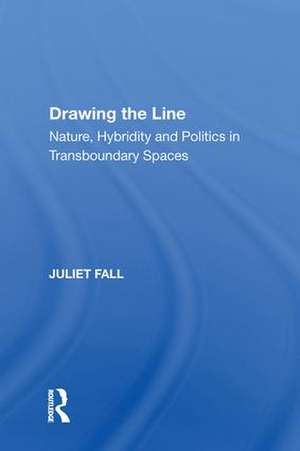Drawing the Line: Nature, Hybridity and Politics in Transboundary Spaces
Autor Juliet Fallen Limba Engleză Paperback – 12 oct 2020
Preț: 390.63 lei
Nou
Puncte Express: 586
Preț estimativ în valută:
74.75€ • 79.93$ • 62.32£
74.75€ • 79.93$ • 62.32£
Carte tipărită la comandă
Livrare economică 17 aprilie-01 mai
Preluare comenzi: 021 569.72.76
Specificații
ISBN-13: 9781138619494
ISBN-10: 1138619493
Pagini: 338
Dimensiuni: 156 x 234 x 18 mm
Greutate: 0.48 kg
Ediția:1
Editura: Taylor & Francis
Colecția Routledge
Locul publicării:Oxford, United Kingdom
ISBN-10: 1138619493
Pagini: 338
Dimensiuni: 156 x 234 x 18 mm
Greutate: 0.48 kg
Ediția:1
Editura: Taylor & Francis
Colecția Routledge
Locul publicării:Oxford, United Kingdom
Cuprins
Contents: Introduction. Defined Boundaries: Drawing lines, constructing spaces; Divide and rule: defining the boundaries of protected areas; Science, politics and legitimacy in the design of protected areas. Contested Boundaries: Contested boundaries and complex spatial scenarios; Constructing transboundary entities; Cooperation: understanding acceptance and resistance. Hybrid Boundaries: Mapping a bounded Other; The myth of boundless nature; Drawing lines in hybrid spaces; Conclusions; Index.
Descriere
This book provides the first comprehensive and critical examination of the spatial assumptions underpinning transboundary protected areas in Europe, at a time of surging global enthusiasm in creating and managing such areas. It builds a link between the critical geopolitical literature on boundaries and social approaches to nature and hybridity.
